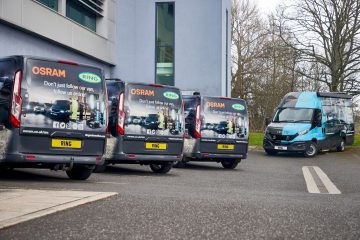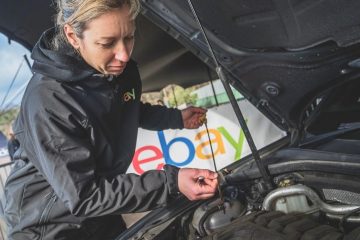UK new-car registrations rose by 15% in February, according to the latest figures from the Society of Motor Manufacturers and Traders (SMMT). However, potential supply shortages and rising oil prices could derail the industry in the coming months.
Although the 58,994 vehicles joining UK roads is an improvement on 2021, the figure is still 25.9% down on February 2020 – the last month of full trading before COVID-19 restrictions began. In addition, the latest figures are compared to a time last year when dealerships were still under restrictions, rendering them almost meaningless.
The automotive industry is also grappling with continued semiconductor shortages, with supplies of vehicles delayed due to slow production as chips run out. Additionally, the conflict in Ukraine threatens to add further trouble to the market. Russia, which has seen heavy sanctions imposed, is responsible for 45% of the world’s palladium and nickel supplies – materials that are crucial in vehicle production. Carmakers therefore need to find new sources to ensure further production delays are not created.
Diesel sales fall to new lows
The new-vehicle diesel market slumped further in February. Conventional models made up just 6.6% of the market with only 3,922 registrations, while mild-hybrid diesels were just 3.2% of sales.
Battery-electric vehicles (BEVs), however, saw a market share of 17.7%, with 10,417 units. Consumers are flocking to the technology, with more choice available through a wider range of models, and more on the way. Electrified sales, including plug-in hybrids (PHEVs) and standard hybrid vehicles accounted for almost a third of registrations in the month.
However, February is traditionally a poor month for new-car figures. Many buyers will wait to purchase their cars in March, when new plates are released, while there is still often a festive hangover meaning consumers have less available finance. Therefore, we may not see a true representation of how the electric vehicle (EV) market is performing until next month.
Petrol remained the most popular fuel choice, accounting for 40.6% of the market (standard engine) and 12.3% (mild-hybrid). Reflecting the increasing use of hybrid technology alongside the internal combustion engine, the standard petrol market share fell 10.5% while mild-hybrid petrol registrations rose 40%, albeit on smaller figures.
More needed for electric vehicles
The SMMT highlighted that with the rise in market share of BEVs in the new-car registrations for February, there is still a need for an accelerated public-chargepoint provision in the UK, or the long-term delivery goals of net-zero transport could be put at risk. Investments are being made, but at a pace that continues to lag behind plug-in vehicle uptake.
April will see the effective end of the Electric Vehicle Homecharge Scheme (EVHS), which has provided vital funding for homeowners to install their own chargepoint. Ahead of the government’s Spring Statement, the SMMT is calling for an extension to both the EVHS and its business counterpart, the Workplace Charging Scheme, beyond 2025 to ensure EV uptake remains on track to meet government’s net-zero deadlines.
The industry body also recommends that VAT on electricity used for public charging points be cut to match that for home use, so that EV drivers are treated equally regardless of where they charge their vehicle.
“Despite February’s traditional low registration numbers, consumers are switching to EVs in ever-increasing numbers,” commented SMMT chief executive Mike Hawes. “More than ever, infrastructure investment needs to accelerate to match this growth. Government must use its upcoming Spring Statement to enable this transition, continuing support for home and workplace charging, boosting public chargepoint rollout to tackle charging anxiety and, given the massive increase in energy prices, reducing VAT on public charging points. This will energise both consumer and business confidence and accelerate our switch to zero emission mobility.”



